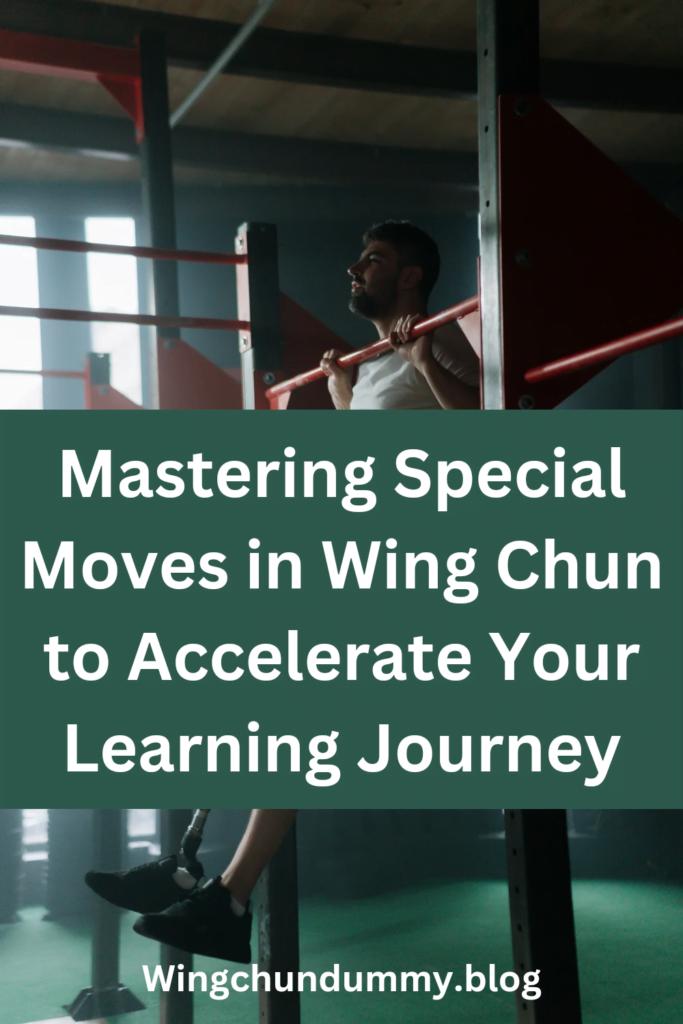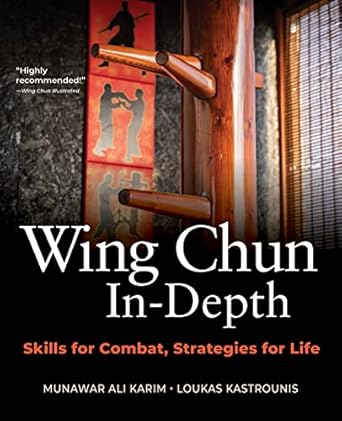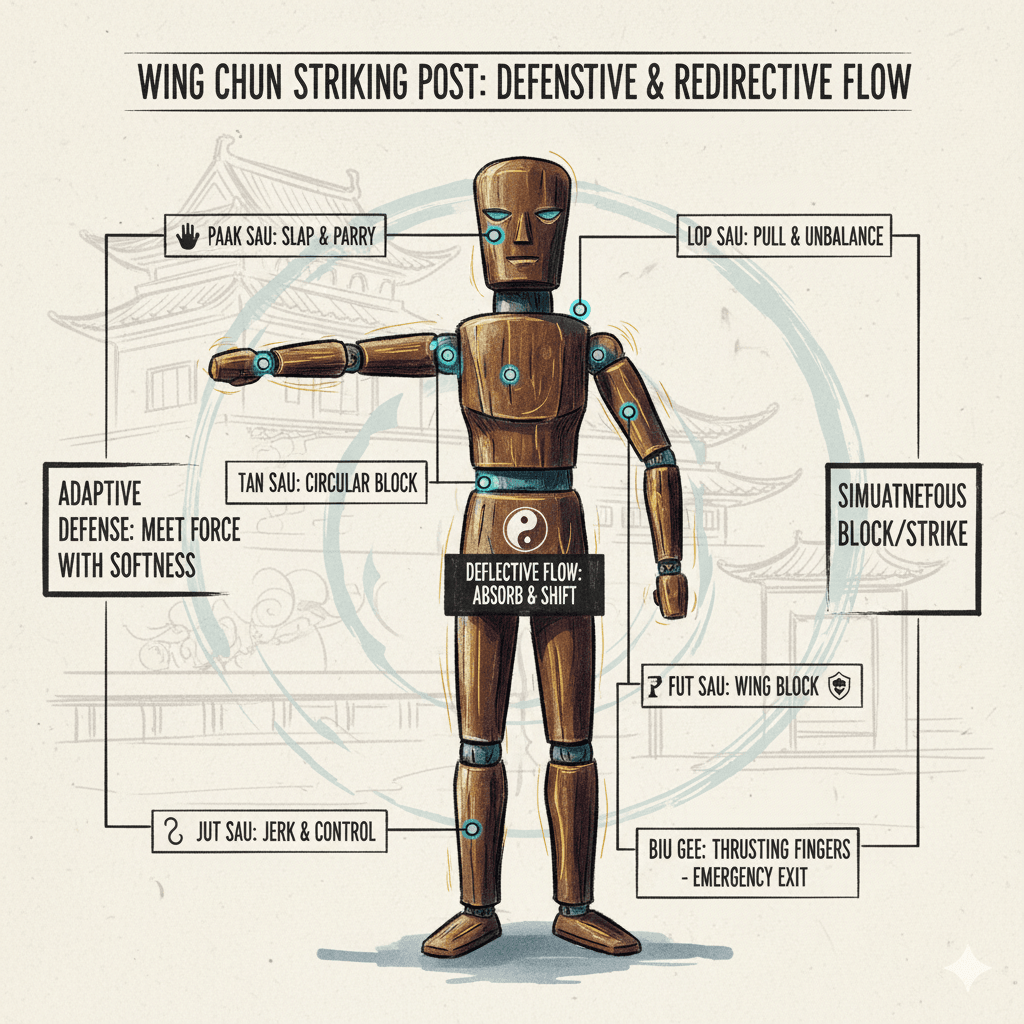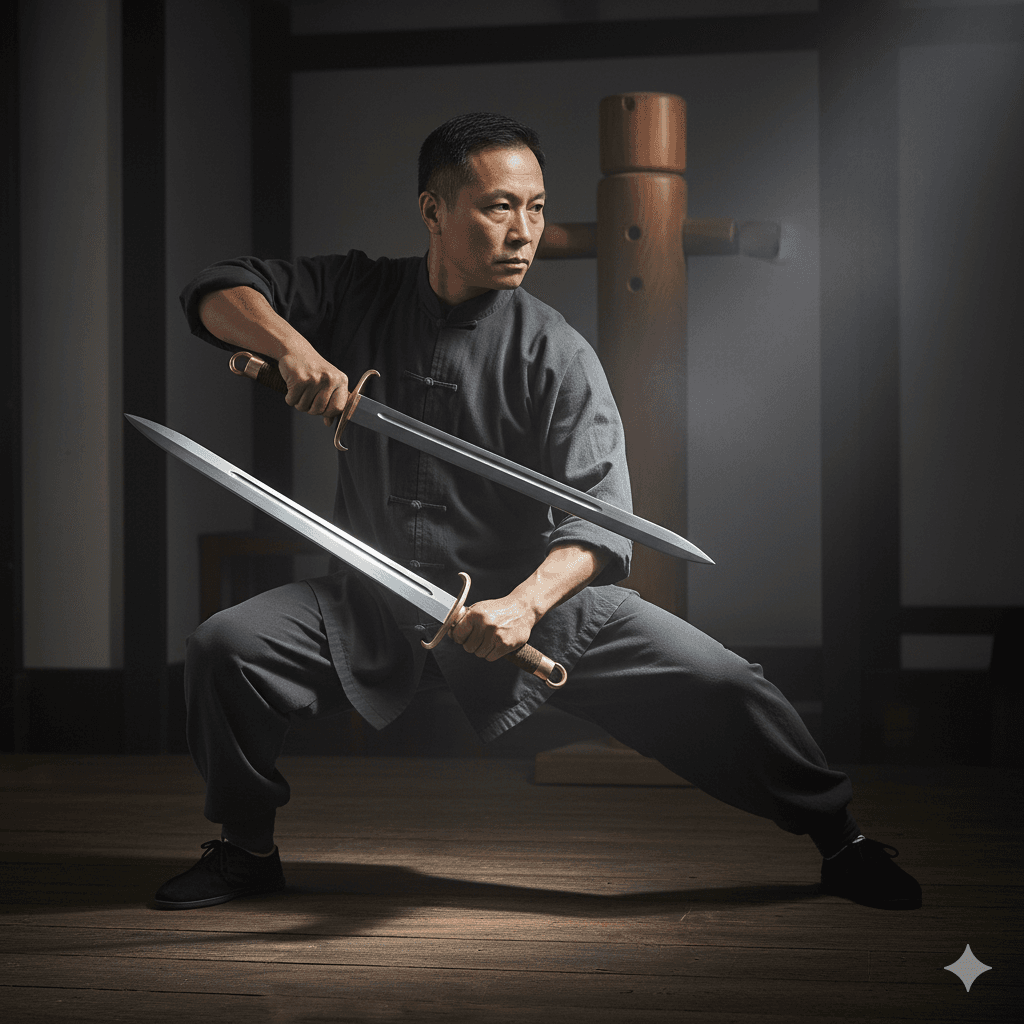Wing Chun is a martial art that distinguishes itself through its emphasis on economy of motion, centerline theory, and the principle of simultaneous attack and defense. Mastering Special Moves
Originating in southern China, Wing Chun is renowned for its efficient and direct techniques, which make it highly effective in real-world self-defense situations.
One of the core principles of Wing Chun is economy of motion, which prioritizes efficiency in every movement.
This means that practitioners aim to use the least amount of energy to achieve the maximum effect, ensuring that each technique is both swift and powerful.
By focusing on streamlined movements, Wing Chun reduces the risk of telegraphing attacks, making them harder for opponents to anticipate and counter.
Another fundamental aspect of Wing Chun is the centerline theory.
This theory posits that the central axis of the body is the most vulnerable and critical area to both defend and attack.
By controlling the centerline, a Wing Chun practitioner can effectively manage an opponent’s movements while protecting their own vital areas.
Techniques such as straight punches and blocks are designed to dominate this central zone, providing both offensive and defensive advantages.
The principle of simultaneous attack and defense is another hallmark of Wing Chun.
Rather than treating offense and defense as separate actions, Wing Chun integrates them into a single, fluid motion.
This approach not only saves time but also disrupts an opponent’s rhythm, making it difficult for them to mount a successful counterattack.
Techniques like the Pak Sau (slapping hand) and Tan Sau (palm-up hand) exemplify this principle by allowing practitioners to deflect an incoming strike while delivering their own attack.
Mastering these fundamental principles is crucial for anyone looking to progress in Wing Chun.
Understanding and internalizing the concepts of economy of motion, centerline theory, and simultaneous attack and defense will provide a solid foundation upon which to build more advanced techniques.
As you delve deeper into Wing Chun, these principles will become second nature, enhancing your overall effectiveness and efficiency in this unique martial art.

The Siu Nim Tao: Foundation of All Special Moves
The Siu Nim Tao form stands as the cornerstone of Wing Chun, serving as the first and most fundamental form in this martial art.
Its primary function is to establish a solid foundation, which is crucial for any practitioner aiming to master more advanced techniques.
By focusing on balance, structure, and basic hand techniques, Siu Nim Tao equips students with the essential skills required for effective combat and self-defense.
Balance is a critical component in Wing Chun, and Siu Nim Tao emphasizes this through a series of precise stances and movements.
Practitioners learn to maintain a stable and grounded position, which is vital for both offense and defense.
The form’s structure further enhances this by teaching the alignment of the body, ensuring that each movement is executed with maximum efficiency and minimal effort.
Among the key moves in the Siu Nim Tao form are the Tan Sau, Fook Sau, and Bong Sau.
These techniques are not only fundamental to the form itself but also serve as building blocks for more complex maneuvers.
The Tan Sau, or “palm-up hand,” is used to deflect incoming attacks while maintaining a strong centerline.
The Fook Sau, or “controlling hand,” helps to control the opponent’s arms, making it easier to execute follow-up strikes.
Lastly, the Bong Sau, or “wing arm,” is instrumental in redirecting the force of an attack, allowing the practitioner to counter with precision.
Mastering these basic hand techniques within the Siu Nim Tao form is essential for progressing in Wing Chun.
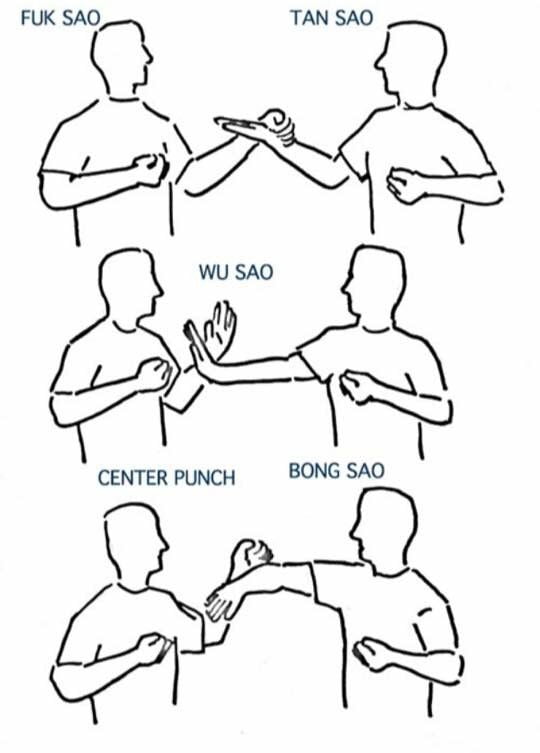
Each move is designed to be fluid and adaptable, preparing students for the dynamic nature of real-world confrontations.
By internalizing the principles taught in Siu Nim Tao, practitioners build a strong foundation that supports their journey toward mastering the more advanced special moves in Wing Chun.
Chain Punching (Lin Wan Kuen): The Rapid Fire Technique
The chain punch, known in Wing Chun as Lin Wan Kuen, is a fundamental technique that epitomizes the style’s emphasis on speed, precision, and relentless forward pressure.
This rapid-fire punching method involves delivering a series of straight punches in quick succession, aimed at overwhelming an opponent while maintaining constant pressure.
Mechanically, chain punching requires proper body alignment to maximize efficiency and minimize wasted energy.
The punch starts from a relaxed guard position, with the fist traveling along the centerline towards the target.
The arm remains slightly bent to ensure that the punch is driven by the entire body rather than just the arm muscles.
Each punch is followed immediately by the next, creating a continuous flow of strikes that can be difficult for an opponent to counter.
One of the most crucial aspects of mastering chain punching is relaxation.
Tension in the shoulders and arms can slow down the punches and reduce their effectiveness.
It is essential to maintain a relaxed yet focused state, allowing the body to move fluidly and quickly.
Practicing relaxation techniques and focusing on breathing can significantly improve the speed and precision of your chain punches.
In addition to relaxation, proper body alignment is vital.
The spine should remain straight, and the shoulders should be relaxed yet poised to deliver energy efficiently.
The feet should be positioned to provide a stable base, allowing for seamless weight transfer from one punch to the next.
This alignment ensures that each punch is delivered with maximum force and minimal effort.
Practicing with a partner is essential for developing the timing and accuracy needed for effective chain punching.
Partner drills simulate real combat scenarios, helping you to refine your technique and learn to adjust your punches based on your opponent’s movements.
Training with a partner also enhances your ability to maintain relentless forward pressure, a key principle in Wing Chun.
Overall, chain punching is more than just a rapid-fire technique; it is a dynamic practice that hones speed, recision,.
and the ability to maintain constant offensive pressure.
By focusing on relaxation, proper body alignment, and practicing with a partner.
you can master this signature move and elevate your Wing Chun skills.
Pak Sau (Slapping Hand): Deflect and Control
Pak Sau, commonly known as the “Slapping Hand,” is a foundational Wing Chun technique that exemplifies the art’s emphasis on deflection and redirection.
At its core, Pak Sau involves using the palm to slap away or deflect an opponent’s incoming strike, creating openings for counter-attacks.
This technique is not merely about physical strength; it hinges on timing, sensitivity, and strategic control.
making it an essential component in both offensive and defensive maneuvers.
In practical application, Pak Sau serves dual purposes.
Defensively, it allows a practitioner to neutralize an opponent’s attack by diverting its trajectory, effectively reducing its impact.
Offensively, the technique can be used to disrupt the opponent’s balance and create advantageous angles for counter-strikes.
Proper execution of Pak Sau requires acute awareness and the ability to read the opponent’s movements, fostering a fluid and adaptive combat style.
To master Pak Sau, one must focus on several key elements.
Timing is critical; the slap must occur at the precise moment to intercept the strike effectively.
Sensitivity, developed through consistent practice.
enables a practitioner to feel and respond to the opponent’s energy.
making the deflection more efficient.
Additionally, maintaining relaxed yet controlled movements ensures that the technique remains fluid and adaptable.
preventing any rigidity that could be exploited by the opponent.
INCORPORATING specific training drills can significantly enhance proficiency in Pak Sau.
One effective drill is the “Pak Sau Drill,” where practitioners take turns delivering and deflecting strikes in a repetitive, controlled manner.
This drill not only improves timing and sensitivity but also ingrains muscle memory for quick and efficient responses.
Another useful exercise is the “Chi Sau” (Sticky Hands) drill, which emphasizes continuous contact and energy flow.
allowing practitioners to refine their reactive skills in a dynamic environment.

Ultimately, Pak Sau is more than just a defensive maneuver.
it is a versatile tool that embodies the principles of Wing Chun.
By dedicating time to practice and refine this technique, practitioners can significantly enhance their overall combat effectiveness.
ensuring they are well-equipped to handle a variety of situations with precision and confidence.
Lop Sau (Grabbing Hand): Seizing the Advantage
Lop Sau, also known as the “grabbing hand,” is a fundamental technique in Wing Chun that emphasizes controlling and manipulating an opponent’s arm.
The primary objective of Lop Sau is to seize the opponent’s limb.
thereby disrupting their balance and opening up opportunities for strikes.
This technique is not merely about physical strength but relies heavily on sensitivity and coordination.
two essential attributes that practitioners must cultivate.
The execution of Lop Sau involves a precise and fluid motion where the practitioner uses their hand to grasp the opponent’s wrist or arm.
This action is designed to pull or guide the opponent off their centerline, causing a momentary imbalance.
This off-balancing maneuver creates a tactical advantage.
enabling the practitioner to follow up with strikes or other techniques.
The effectiveness of Lop Sau lies in the ability to feel and respond to the opponent’s movements swiftly and accurately, a skill that is honed through consistent practice.
To develop the necessary sensitivity and coordination for effective Lop Sau, practitioners often engage in specific drills with a partner.
These Lop Sau drills typically involve repetitive grabbing and releasing motions, allowing both individuals to experience the dynamic interaction of forces.
Through these exercises, practitioners learn to maintain proper structure and alignment while adapting to the opponent’s energy and movements.
One common exercise to enhance Lop Sau skills is the Lop Sau cycle drill.
In this drill, partners stand facing each other in a neutral stance.
taking turns performing the grabbing motion while the other counters.
This cyclic exchange helps build reflexes and the ability to detect subtle changes in pressure and direction.
Additionally, incorporating Chi Sau (sticky hands) practice can further refine a practitioner’s sensitivity.
as it involves continuous contact and flow between partners, mirroring the unpredictable nature of real combat scenarios.
Overall, mastering Lop Sau requires patience, dedication, and an attuned sense of touch.
By focusing on sensitivity and coordination through targeted drills.
Wing Chun practitioners can effectively utilize the grabbing hand technique to seize control and create advantageous opportunities in their martial arts practice.
Bong Sau (Wing Arm): Versatile Defense and Transition
The Bong Sau, or Wing Arm, is a fundamental technique in Wing Chun.
primarily serving as a defensive maneuver that effectively redirects an opponent’s force.
This move is characterized by a bent arm that deflects incoming strikes.
allowing the practitioner to maintain control of the centerline.
Its versatility makes it an essential component of any Wing Chun practitioner’s skill set.
enabling fluid transitions between offensive and defensive tactics.
In application, the Bong Sau can be utilized in a variety of scenarios.

For instance, when an opponent delivers a high punch, the Bong Sau can be employed to deflect the strike.
directing it away from the practitioner’s centerline.
This redirection not only neutralizes the immediate threat but also creates opportunities for counter-attacks or other defensive maneuvers.
Additionally, the Bong Sau can seamlessly transition into other techniques such as Tan Sau (palm-up hand) or Fook Sau (controlling hand), depending on the flow of the encounter.
Training methods to develop a strong and flexible Bong Sau are crucial.
One effective exercise is Chi Sau, or sticky hands practice.
which emphasizes sensitivity and responsiveness to an opponent’s movements.
During Chi Sau, practitioners engage in continuous, flowing contact.
allowing them to refine their ability to instinctively apply Bong Sau in dynamic situations.
This practice enhances not only the physical execution of the technique but also the practitioner’s awareness and adaptability.
Another important aspect of training Bong Sau is to focus on maintaining proper structure and alignment.
The elbow should position slightly below the wrist.
and the shoulder should remain relaxed to ensure maximum efficiency in deflecting force.
Regular drilling of Bong Sau in solo and partner exercises can help solidify these principles.
making the technique a reliable tool in both sparring and real-world self-defense situations.
Mastering the Bong Sau requires dedication and consistent practice.
By integrating this versatile defense into their repertoire.
Wing Chun practitioners can significantly enhance their ability to control encounters.
maintain the centerline, and transition smoothly between techniques.
Chi Sau (Sticky Hands): Developing Sensitivity and Reflexes
Chi Sau, commonly known as Sticky Hands, is a foundational training exercise in Wing Chun that plays a crucial role in developing tactile sensitivity and reflexive responses.
The primary objective of Chi Sau is to maintain constant contact with the opponent’s arms.
allowing practitioners to sense and react to their partner’s movements and intentions instinctively.
This exercise helps build a deep understanding of the opponent’s energy and force.
enabling a more intuitive and effective response during combat scenarios.
One of the key goals in Chi Sau is to cultivate a heightened sense of touch.
which is essential for anticipating and countering the opponent’s actions.
By maintaining close contact, practitioners can detect subtle changes in pressure and direction.
allowing them to respond with appropriate techniques.
This tactile sensitivity is critical for executing precise and timely counterattacks.
making it a vital aspect of Wing Chun training.
To practice Chi Sau effectively.
it is essential to focus on relaxation and maintaining a continuous flow.
Tension in the muscles can impede sensitivity and slow down reflexes.
so it is crucial to remain relaxed and fluid in movements.
Practitioners should aim to keep their arms soft yet responsive.
allowing for smooth transitions between offensive and defensive maneuvers.
This relaxed state not only enhances tactile sensitivity but also promotes better energy transfer and efficiency in techniques.
Another vital aspect of Chi Sau is the concept of continuous flow.
Rather than engaging in abrupt or jerky movements.
practitioners should strive for a seamless and uninterrupted exchange of energy with their partner.
This continuous flow helps to maintain the connection and allows for more effective sensing and responding to the opponent’s actions.
By practicing Chi Sau with a focus on relaxation and flow.
practitioners can develop the refined reflexes and sensitivity necessary for mastering Wing Chun techniques.
Integrating Special Moves into Sparring: Practical Application
Incorporating special moves into sparring practice is a crucial aspect of mastering Wing Chun.
Sparring provides an invaluable opportunity to test and refine your skills in a dynamic.
unpredictable environment, which closely mimics real-world scenarios.
By integrating these advanced techniques into your sparring sessions.
you can gain a deeper understanding of their practical applications and limitations.
One effective strategy for applying special moves in real-time is to start with focused sparring drills.
These drills allow you to isolate specific techniques and practice them repeatedly with a partner.
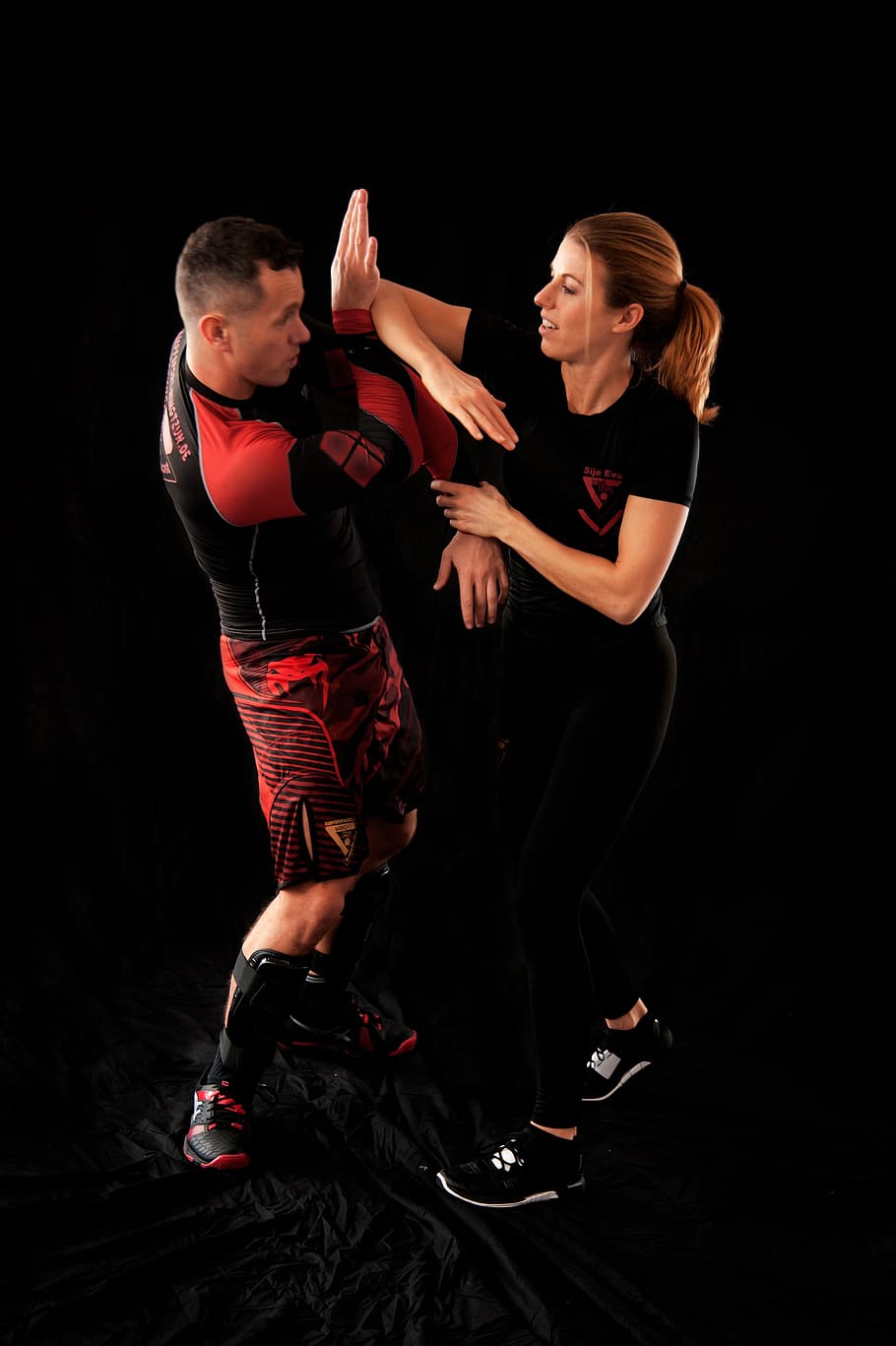
For example, you can dedicate a sparring session to perfecting the use of the Biu Jee (thrusting fingers) technique.
ensuring you are comfortable with its execution before attempting to integrate it into a full sparring match.
Adapting to different opponents is another essential aspect of successful sparring.
Each opponent will have a unique fighting style.
so it is important to remain flexible and adjust your approach accordingly.
Pay attention to your opponent’s movements, strengths, and weaknesses.
and look for opportunities to deploy your special moves effectively.
This adaptability will enhance your ability to respond to various combat scenarios and improve your overall Wing Chun proficiency.
Maintaining composure under pressure is vital during sparring sessions.
High-intensity situations can lead to mistakes or poorly executed techniques if you become overwhelmed.
Practice deep breathing and mindfulness to stay calm and focused.
allowing you to think clearly and execute your special moves with precision.
Controlled intensity is key; sparring is not about overpowering your opponent.
but about honing your skills and improving your technique.
To prevent injuries, always use protective gear such as gloves, mouthguards, and shin guards during sparring sessions.
This equipment will help minimize the risk of harm while allowing you to engage in more practice.realistic and vigorous practice.
Remember, the primary goal of sparring is to learn and grow.
so prioritize safety and mutual respect with your training partners.

